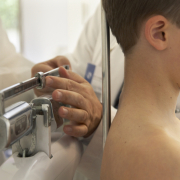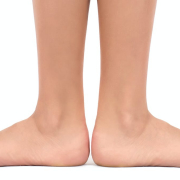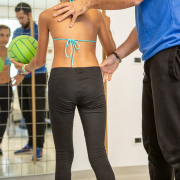How often should a brace be changed?
Receiving their first brace is a key moment in the treatment of youngsters affected by spinal deformities.
This is the brace that shows them exactly what the treatment consists of. They learn about the pads, which are carefully positioned to correct their back; they become familiar with the fastener and how to adjust it to the right tightness, as well as how the brace sits under the armpits. They also have to get used to the shoulder pads and, quite simply, the weight of the plastic.
Surprising as it may seem, some youngsters even grow quite attached to their first brace as, over the weeks and months, it starts to become a part of their daily life and less of a problem. This “friend”, which they sometimes find irritating, especially early on, gradually feels less and less bulky, and in fact there will eventually come a point when it is too small. After all, while the brace stays the same, the youngster inside it grows of course!
For this reason, a new brace will be needed from time to time. It certainly isn’t possible to use the same one from the start to the end of the treatment. But there are also other reasons why a brace needs to be replaced, the first and most obvious being that, like any object used on a daily basis and for a number of hours each day, it starts to wear out. Indeed, after a time, it is subject to breaking, or some of its parts may no longer be intact.
A further reason, and this is perhaps the most important, is that the brace, especially the first one, moulds the youngster’s back so much that after a few months it becomes necessary to construct a new one adapted to its changing volumes. Unless braces are updated to take this aspect into account, they simply cannot work at full efficiency.
The young scoliosis patient’s back changes not only as an effect of the brace, but also because he/she is normally still growing.
In this stage of development, it is perfectly normal to get taller and heavier. A brace can usually tolerate slight increases in height and weight, but when these are more marked it will start to feel uncomfortable. Even just looking at the youngster in his/her brace can be enough to tell you that the time has come to start thinking about getting a new one made.
From the second brace onwards, more time can usually elapse between braces. It may even be enough to get a new one about once a year.
Youngsters are often anxious at the prospect of changing their brace, fearing that the new one will be uncomfortable. Actually, however, they are unlikely to experience the same discomfort they had at the very start of the treatment.
In fact, in most cases they will find the new brace is more “comfortable”, given that it replaces one that had become too short and tight, and so no longer adequate. Furthermore, having already had to get used to wearing a brace, these “experienced” patients will be better able to recognise, quickly, any problems with the new one.
This will allow them to give the orthopaedic technician clear feedback, useful for making it fit better.












Leave a Reply
Want to join the discussion?Feel free to contribute!